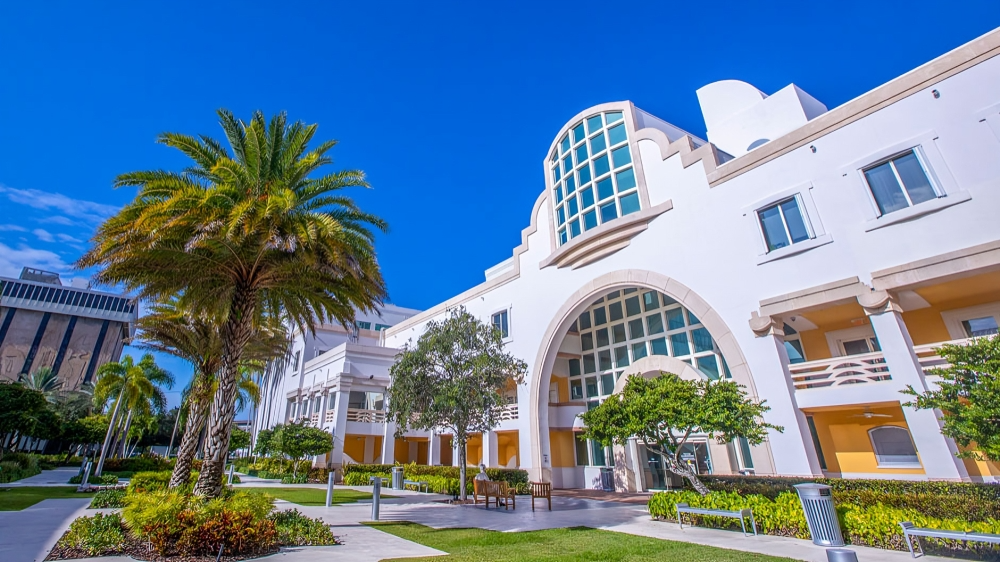Sylvester scientists hope their method, which shows early promise in preclinical models, may someday target brain metastases and primary breast cancer tumors in one treatment
Researchers at Sylvester Comprehensive Cancer Center at the University of Miami Miller School of Medicine have developed a nanoparticle that can penetrate the blood-brain barrier. Their goal is to kill primary breast cancer tumors and brain metastases in one treatment, and their research shows the method can shrink breast and brain tumors in laboratory studies.
Brain metastases, as these secondary tumors are called, most commonly arise from solid tumors like breast, lung and colon cancer and are often associated with a poor prognosis. When cancer breaches the brain, it can be difficult for treatment to follow, in part because of the blood-brain barrier, a near-impenetrable membrane that separates the brain from the rest of the body.
The Sylvester team’s nanoparticle may one day be used to treat the metastases with the added benefit of treating the primary tumor at the same time, according to Shanta Dhar, Ph.D., an associate professor of Biochemistry and Molecular Biology and assistant director of Technology and Innovation at Sylvester, who led the study. She is the senior author of a paper published May 6 in the journal Proceedings of the National Academy of Sciences.

By loading the particle with two prodrugs that target mitochondria, the energy production center of the cell, the researchers showed that their method could shrink breast and brain tumors in preclinical studies.
“I always say nanomedicine is the future, but of course we have already been in that future. Nanomedicine is definitely also the future for cancer therapeutics.”, – said Dhar, referring to commercially available COVID-19 vaccines, which use nanoparticles in their formulation.
The new method uses a nanoparticle made of a biodegradable polymer, previously developed by Dhar’s team, coupled with two drugs also developed in her lab that take aim at cancer’s energy sources. Because cancer cells often have a different form of metabolism than healthy cells, stifling their metabolism can be an effective way to kill tumors without harming other tissues.
One of these drugs is a modified version of a classic chemotherapy drug, cisplatin, which kills cancer cells by damaging DNA in rapidly growing cells, effectively halting their growth. But tumor cells can repair their DNA, sometimes leading to cisplatin resistance. Dhar’s team modified the drug to shift its target from nuclear DNA, the DNA that makes up our chromosomes and genome, to mitochondrial DNA. Mitochondria are our cells’ energy sources and contain their own, much smaller genomes — and, importantly for cancer therapeutic purposes, they don’t have the same DNA-repair machinery that our larger genomes do.
Because cancer cells can switch between different energy sources to sustain their growth and proliferation, the researchers combined their modified cisplatin, which they call Platin-M and attacks the energy-generating process known as oxidative phosphorylation, with another drug they developed, Mito-DCA, that specifically targets a mitochondrial protein known as a kinase and inhibits glycolysis, a different kind of energy generation.
Dhar said it was a long route to develop a nanoparticle that can access the brain. She has been working on nanoparticles for her whole independent career, and in a previous project studying different forms of polymers, the researchers noticed that a small fraction of some of these nanoparticles reached the brain in preclinical studies. By honing those polymers further, Dhar’s team developed a nanoparticle that can cross both the blood-brain barrier and the outer membrane of mitochondria.
“There have been a lot of ups and downs to figuring this out, and we’re still working to understand the mechanism by which these particles cross the blood-brain barrier,” – Dhar said.
The team then tested the specialized drug-loaded nanoparticle in preclinical studies and found that they work to shrink both breast tumors and breast cancer cells that were seeded in the brain to form tumors there. The nanoparticle-drug combination also appeared to be nontoxic and significantly extended survival in lab studies.
Next, the team wants to test their method in the lab to replicate human brain metastases more closely, perhaps even using patient-derived cancer cells. They also want to test the drug in laboratory models of glioblastoma, a particularly aggressive brain cancer.
“I’m really interested in polymer chemistry, and using that toward medical purposes really fascinates me. It’s great to see that applied toward cancer therapeutics.” , – said Akash Ashokan, a University of Miami doctoral student working in Dhar’s lab and co-first author on the study along with doctoral student Shrita Sarkar.
Funding: S.D. acknowledges the financial support from Sylvester Comprehensive Cancer Center, the NCI funded Sylvester Comprehensive Cancer Center support grant 1P30CA240139, Bankhead Coley Cancer Research grant (8BC10), and Sylvester bridge funding award.
Disclosures/potential conflicts: The authors declare no competing interests.
Authors: Akash Ashokan, Shrita Sarkar, Mohammad Z. Kamran, Bapurao Surnar, Akil A. Kalathil, Alexis Spencer, Shanta Dhar

See other posts from Sylvester Comprehensive Cancer Center in OncoDaily.
